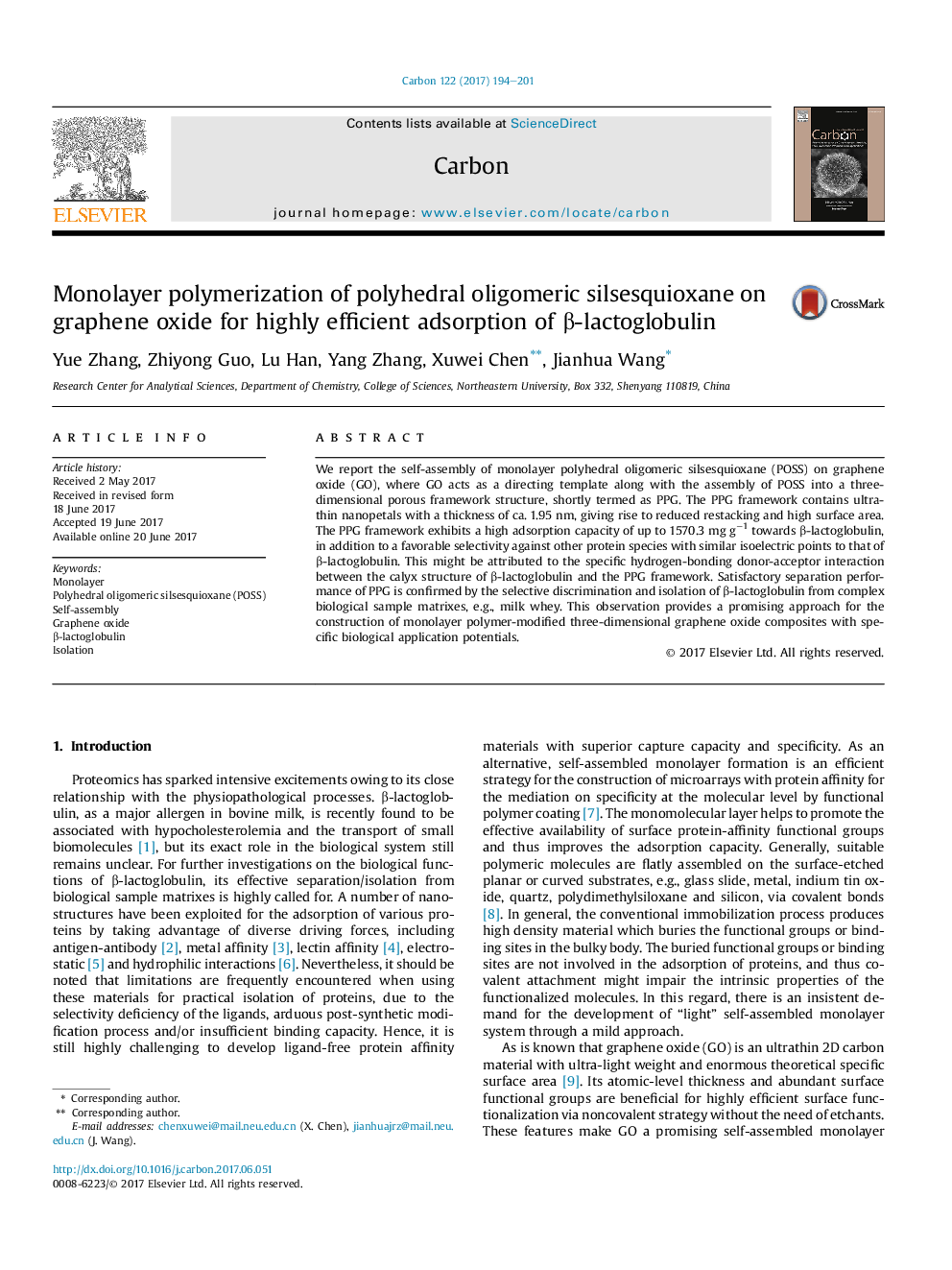| Article ID | Journal | Published Year | Pages | File Type |
|---|---|---|---|---|
| 5431926 | Carbon | 2017 | 8 Pages |
We report the self-assembly of monolayer polyhedral oligomeric silsesquioxane (POSS) on graphene oxide (GO), where GO acts as a directing template along with the assembly of POSS into a three-dimensional porous framework structure, shortly termed as PPG. The PPG framework contains ultrathin nanopetals with a thickness of ca. 1.95 nm, giving rise to reduced restacking and high surface area. The PPG framework exhibits a high adsorption capacity of up to 1570.3 mg gâ1 towards β-lactoglobulin, in addition to a favorable selectivity against other protein species with similar isoelectric points to that of β-lactoglobulin. This might be attributed to the specific hydrogen-bonding donor-acceptor interaction between the calyx structure of β-lactoglobulin and the PPG framework. Satisfactory separation performance of PPG is confirmed by the selective discrimination and isolation of β-lactoglobulin from complex biological sample matrixes, e.g., milk whey. This observation provides a promising approach for the construction of monolayer polymer-modified three-dimensional graphene oxide composites with specific biological application potentials.
Graphical abstractDownload high-res image (262KB)Download full-size image
